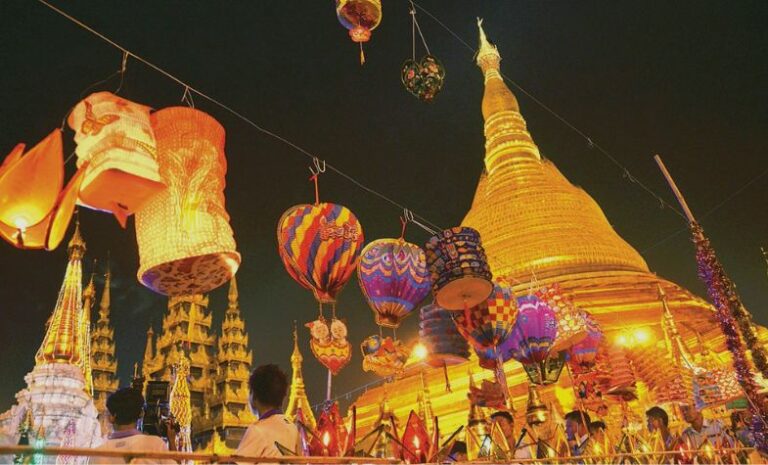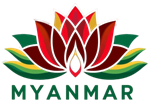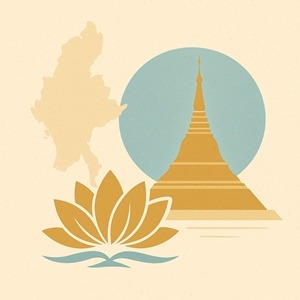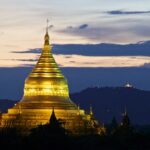
Public Holidays in Myanmar 2025
Complete Guide to National and Cultural Celebrations
Myanmar, known for its rich traditions and cultural diversity, celebrates many public holidays throughout the year. These days reflect the country’s religious harmony, historical milestones, and seasonal festivals. In 2025, Myanmar will observe more than twenty public holidays, combining Buddhist celebrations, national commemorations, and international events.
For travelers, businesses, and locals, understanding the holiday calendar is essential for planning trips, family gatherings, and office schedules. The list below shows the official Public Holidays in Myanmar for 2025, along with short explanations of their cultural and historical importance.
🗓️ January – New Beginnings
International New Year’s Day – January 1
Like many countries, Myanmar welcomes the Gregorian New Year on January 1. Families gather for celebrations, and city streets in Yangon and Mandalay glow with festive lights. Although Myanmar follows a traditional lunar calendar, New Year’s Day remains an official public holiday recognized nationwide.
Independence Day – January 4
This is one of Myanmar’s most important national holidays. Independence Day marks the country’s liberation from British colonial rule in 1948. Therefore, government offices, schools, and businesses close while parades, speeches, and flag ceremonies take place across the nation. The main event happens in Nay Pyi Taw, where the President delivers a national address.
Chinese New Year – January 29
Celebrated mainly within Myanmar’s Chinese-Burmese communities, Chinese New Year brings dragon dances, lanterns, and family reunions. In addition, Chinatown districts in Yangon and other major cities come alive with red decorations and traditional foods symbolizing luck and prosperity. Although it is not a Buddhist holiday, it remains an officially recognized celebration that reflects Myanmar’s cultural inclusiveness.
🌾 February – Unity and Reflection
Union Day – February 12
Union Day commemorates the signing of the Panglong Agreement in 1947, which united Myanmar’s ethnic groups before independence. The day emphasizes peace, diversity, and harmony among the nation’s communities. As a result, cultural performances, parades, and exhibitions are held nationwide.
🌱 March – Agriculture and National Pride
Peasants’ Day – March 2
This holiday honors farmers, the backbone of Myanmar’s economy. Agricultural fairs and exhibitions highlight sustainable farming and food security. Moreover, it reminds citizens of the importance of rural communities to national development.
Tabaung Holidays – March 12–16
The Tabaung Full Moon marks the end of the Buddhist lent calendar year. It is one of Myanmar’s oldest religious observances. Devotees visit pagodas, make offerings, and build sand stupas along riverbanks. During this time, temples glow with candles and flowers, symbolizing peace and prosperity.
Armed Forces Day – March 27
Formerly called Resistance Day, Armed Forces Day honors the bravery of Myanmar’s military during World War II. The main ceremony takes place in Nay Pyi Taw, where a grand parade displays national pride. Citizens also reflect on sacrifices made in pursuit of independence and stability.
💦 April – The Thingyan Water Festival
Thingyan Holidays – April 13–21
Thingyan is the most anticipated festival of the year. It marks the traditional Myanmar New Year and symbolizes cleansing and renewal. During the celebration, people throw water to wash away bad luck from the past year.
Throughout the week, streets turn into joyful venues filled with music, dance, and water pavilions known as mandats. Families visit monasteries, offer food to monks, and pay respect to elders. As a result, business operations pause completely, and almost the entire country joins the festivities.
The 2025 celebration lasts nine days — one of the longest national breaks in the calendar.
🌺 May – Labor and Devotion
Labour Day – May 1
Myanmar observes International Workers’ Day to recognize workers’ rights and contributions. Moreover, unions and community organizations host events promoting fair wages and safer conditions.
Full Moon Day of Kasong – May 11
Kasong celebrates the birth, enlightenment, and death (Parinirvana) of Gautama Buddha. Pagodas are illuminated while devotees carry flowers and water offerings in peaceful processions. It is a spiritual reminder of compassion and mindfulness.
🌞 July – Rainy Season Festivals
Full Moon Day of Waso – July 9
The Waso full moon marks the beginning of Buddhist Lent (Vassa). During this period, monks remain in monasteries for meditation and study. In addition, laypeople make offerings of robes and candles, believing such acts bring blessings.
Martyrs’ Day – July 19
Martyrs’ Day honors General Aung San and his colleagues, who were assassinated in 1947 while striving for independence. Ceremonies across the nation include flag-lowering, moments of silence, and tributes at the Martyrs’ Mausoleum in Yangon. Consequently, the day holds deep national significance.
🪔 October – Festival of Lights
Thadingyut Holidays – October 5–7
Thadingyut, or the Festival of Lights, celebrates the Buddha’s return from the celestial world after preaching to his mother. Homes, streets, and pagodas shine with candles and colorful bulbs. Meanwhile, families show gratitude to teachers and elders by offering gifts and asking forgiveness.
For visitors, Thadingyut offers one of the most beautiful and photogenic experiences in Myanmar.
🌕 November – Offerings and National Pride
Tazaungmone Holidays – November 1–4
Following Thadingyut, Tazaungmone marks the end of Buddhist Lent. People donate new robes to monks in the Kathein ceremony. Overnight weaving contests at pagodas show the nation’s creativity and devotion.
National Day – November 14
National Day commemorates the 1920 student movement that sparked Myanmar’s independence struggle. Schools and universities hold exhibitions to honor students who fought for freedom through education.
🎉 December – Year-End Festivities
Karen New Year – December 19
Celebrated in Kayin State, Karen New Year marks the start of the Karen lunar calendar. Traditional dances, bamboo-pole games, and feasts express unity and ethnic pride.
Christmas Holidays – December 25–28
Christmas is an official holiday reflecting Myanmar’s religious diversity. Churches host midnight services, and cities display festive decorations. Moreover, many non-Christians join the joyful atmosphere by exchanging greetings and gifts.
Eid al-Fitr and Deepavali – Variable Dates
Eid al-Fitr (end of Ramadan) and Deepavali (Hindu Festival of Lights) follow lunar calendars. Although their dates vary, both are officially recognized to honor Myanmar’s Muslim and Hindu communities.
⚖️ Additional Notes for 2025
If a public holiday falls on Saturday or Sunday, there will be no substitute weekday holiday.
However, the government has designated January 11, March 22, March 29, and November 8 as replacement workdays to balance extended breaks.
Therefore, business owners and travelers should check official announcements by the Ministry of Labour, Immigration, and Population for any updates.
✨ Conclusion
The Myanmar 2025 public holiday calendar beautifully represents the nation’s unity and spirituality. From Buddhist full-moon days to national commemorations, each holiday tells a story of faith and harmony.
For citizens, these holidays offer time to reconnect with family and tradition. For travelers, they provide unforgettable cultural experiences — from the laughter of Thingyan to the glowing lights of Thadingyut.
Ultimately, Myanmar’s calendar reflects a timeless rhythm between old traditions and modern life — a balance that keeps the nation’s spirit alive.
✅ FAQ: Public Holidays in Myanmar 2025
1. How many public holidays are there in Myanmar in 2025?
There are around 25 official public holidays in Myanmar for 2025, including major festivals such as Thingyan Water Festival, Thadingyut, and Tazaungmone.
2. What is the longest holiday in Myanmar 2025?
The Thingyan Water Festival in April 2025 is the longest holiday, lasting from April 13 to 21. It marks the traditional Myanmar New Year and is celebrated nationwide with water-throwing, donations, and family gatherings.
3. Which public holidays are based on the lunar calendar?
Holidays such as the Full Moon Day of Kasong, Waso, Thadingyut, and Tazaungmone follow the Buddhist lunar calendar, so their dates vary each year.
4. Are public holidays the same throughout Myanmar?
Yes, all national public holidays are observed across Myanmar, but some ethnic states may celebrate regional or cultural holidays, such as Karen New Year or Chin National Day.
5. What are the most important holidays to experience in Myanmar?
The Thingyan Water Festival, Thadingyut Festival (Festival of Lights), and Tazaungmone Festival are the most colorful and culturally significant celebrations in Myanmar.
6. Are banks and government offices closed on public holidays?
Yes. Banks, schools, and government offices close during official holidays, though tourist attractions and hotels usually remain open.
7. How do travelers plan around Myanmar public holidays?
Travelers should book hotels and transport early during major festivals such as Thingyan or Thadingyut, as demand and prices increase significantly.


